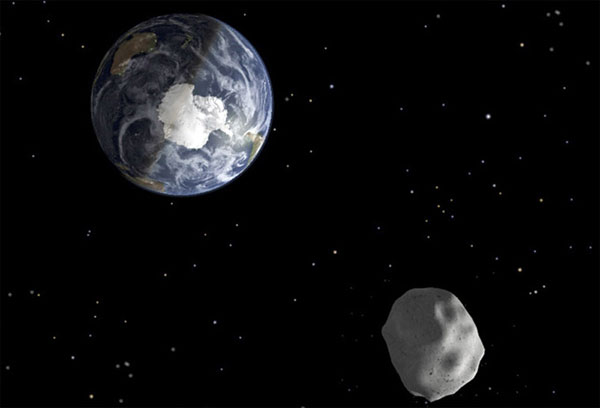Monitor the risk of collisions between giant meteorites and Earth
Russia's telescope has discovered a giant meteorite that can plunge into the Earth in the future. If this collision occurs, the explosion will be 1,000 times more powerful than the 2013 Chelyabinsk case.
2014 UR116 meteorite was discovered through automatic telescopes located in the mountains near the city of Kislovodsk. 2014 UR116 has a diameter of about 370m, larger than the size of Apophis, a meteorite that was once thought to be a "global affliction ".

If a collision occurs between 2014 UR116 meteorite and Earth, the explosion will be 1,000 times larger than the explosion in Chelyabinsk, Russia, in February last year.(Artwork: NASA / Reuters)
Scientific Russia reported that 2014 UR116 has a large size and the collision with the Earth will be "catastrophic" . At that time, it would be 1,000 times more powerful than the meteorite explosion in the sky of Chelyabinsk.
Victor Shor, expert of the Institute of Applied Astronomy, said giant meteorites may not harm the Earth for at least the next 6 years. Currently, the closest position of 2014 orbit UR116 is 4.5 million km from Earth.
The trajectory of 2014 UR116 is changing erratically because it also moves near Venus and Mars, while the gravity of these planets may also affect its orbit. According to RT, after identifying the new object, the Russian expert team transferred the data to colleagues at the Smithsonian astrophysical observatory. Thus, observatories in the world can study 2014 UR116 and determine the correct orbit.
On February 15 last year, meteorites about 15 meters in diameter plunged into the atmosphere at 64,000km / hr and exploded at a height of 19-24km above the ground. The collision caused meteorite rain in the sky of the provinces of Chelyabinsk, Tyumen, Kyrgan and Sverdlovsk, as well as many localities along the Urals Mountains.
The energy source in the meteorite when exploded is estimated to be equivalent to the explosion of about 300-500,000 tons of TNT, and is 30 times stronger than the power of the Hiroshima bomb, Japan, 1945. .
- The surface of the 'giant' meteorite landed on Earth
- Huge meteorites will graze the Earth
- Meteorites like 65,000 atomic bombs are about to stab the Earth?
- Did meteor collisions help our human species evolve like today?
- NASA eliminated the risk of collisions between Apophis and Earth
- NASA established an Earth defense unit against the risk of collisions with meteors
- The risk of meteorites and cosmic waste threatens the Earth
- ISS space station has a problem due to collisions with meteorites
- The earth can hit the
- The risk of meteorite crashing into the earth is greater than expected
- Detecting meteor mass in China
- Life on the earth grows by colliding with meteorites
 Van Allen's belt and evidence that the Apollo 11 mission to the Moon was myth
Van Allen's belt and evidence that the Apollo 11 mission to the Moon was myth The levels of civilization in the universe (Kardashev scale)
The levels of civilization in the universe (Kardashev scale) Today Mars, the sun and the Earth are aligned
Today Mars, the sun and the Earth are aligned The Amazon owner announced a secret plan to build a space base for thousands of people
The Amazon owner announced a secret plan to build a space base for thousands of people